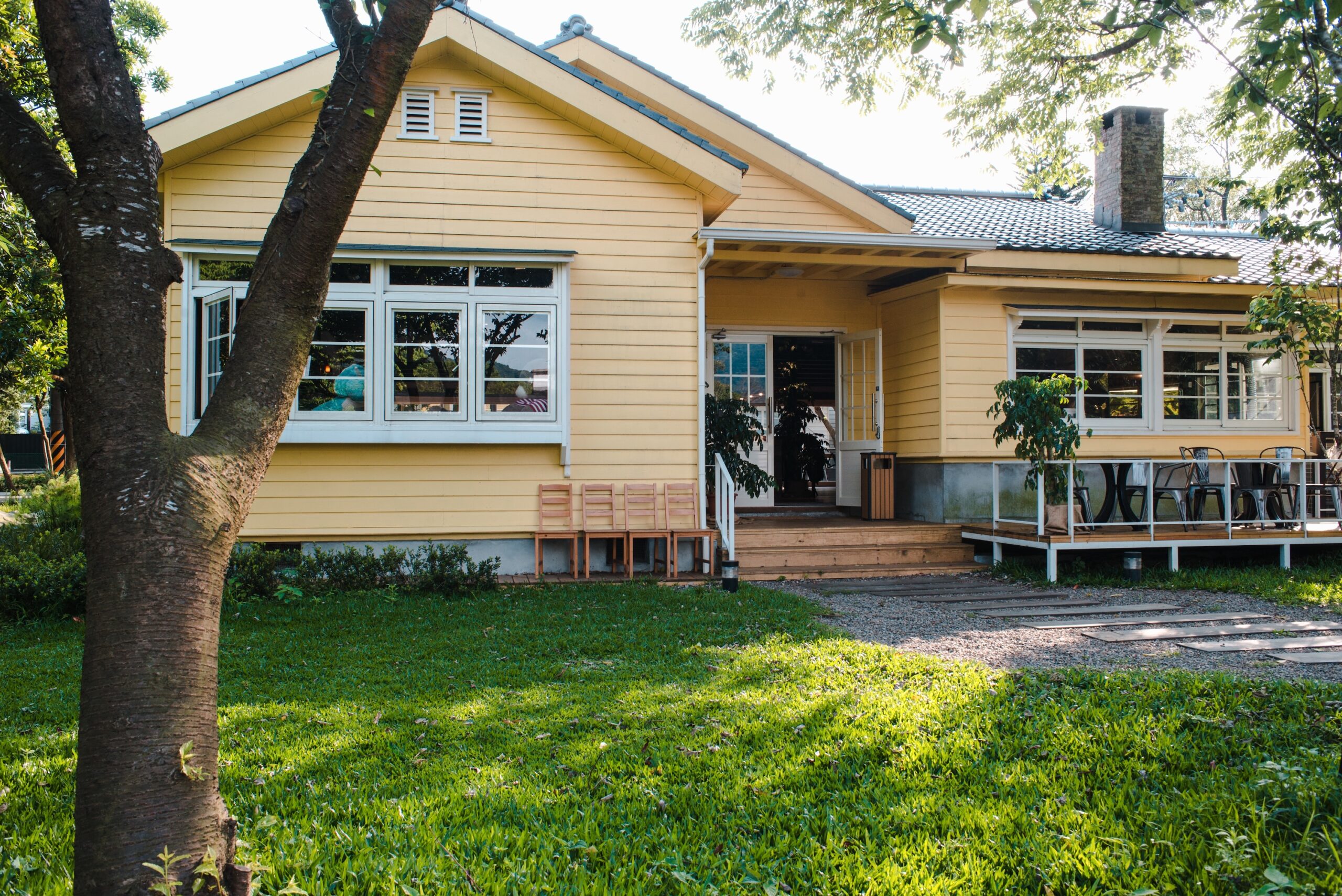You Can Now Buy a Home with a 5% Deposit. But Should You?

Buying your first home with just a 5% deposit is now possible in Australia, thanks to government support and low-deposit loans. But is it the right move for you? This article takes a neutral look at the pros and cons, with up-to-date 2024 facts on home prices, interest rates, Lenders’ Mortgage Insurance (LMI), and first-home buyer schemes.
The Deposit Hurdle in Today’s Market
For years, aspiring homeowners were told to save a 20% deposit to avoid extra costs. In Australia’s expensive housing market, that’s a huge sum. The national median home price is around $815,000, so a 20% deposit would be about $163,000. In major cities, prices are even higher – Sydney’s median is roughly $1.2 million (needing a $240k deposit for 20%), while Melbourne sits around the high-$700,000s. Saving that kind of money can take many years, especially with rents surging and the cost of living rising.
Why is 5% now an option? In the past, a small deposit meant you had to pay for Lenders’ Mortgage Insurance (LMI) or get a guarantor. But recently, government initiatives (explained below) and lender offerings have made it possible to buy with just 5% down – that’s $30,000 on a $600,000 home. It’s a game-changer for first-home buyers struggling to reach a 20% deposit, but it comes with important trade-offs.
Government Support for Low-Deposit Buyers
Federal schemes like the First Home Guarantee (FHBG) have opened the door to low-deposit home loans. The First Home Guarantee allows eligible first-time buyers to purchase with only 5% deposit without paying LMI, because the government acts as a guarantor for the remaining 15% of the deposit. In other words, you get the benefit of a 20% deposit even if you only saved 5%. This scheme has income and property price caps – for example, as of 2024 the income limit is $125,000 for singles or $200,000 for couples, and there are maximum purchase price limits depending on your city or region (around $900k in Sydney, lower in other areas). The eligibility was also expanded in 2023 to allow joint applications by friends or siblings, not just married/de facto couples. There are a limited number of spots (35,000 FHBG places per year, plus additional for regional and single-parent guarantees), but these schemes now support roughly one in three first-home buyers entering the market.
State governments also offer help. For instance, first-home buyer grants and stamp duty concessions can reduce your upfront costs. In NSW, eligible first-home buyers pay no stamp duty on homes up to $800,000, which can save tens of thousands. These measures don’t lower your deposit requirement, but they ease other costs so you can put more towards your deposit.
Bottom line: With the right conditions – if you meet the criteria and secure a place in a scheme – you really can buy a home with just 5% down. Now, let’s weigh the upsides and downsides of taking this route.
Pros of Buying with a 5% Deposit
1. Get Into the Market Sooner. The biggest advantage of a 5% deposit is speed. You don’t have to spend extra years chasing a 20% deposit while home prices (potentially) keep rising. By buying sooner, you start paying off your own home instead of paying rent, and you begin building equity. If property values go up, you’ll benefit from that capital growth sooner – which might outpace your ability to save if you kept renting. In the current market, rents have been soaring (up 25% in the last two years in some cities), making it even harder to save. Getting your foot in the door with a smaller deposit can break the rent trap cycle.
2. Take Advantage of Government Support. If you qualify for schemes like the First Home Guarantee, you can avoid the hefty LMI fee even with 5% down. This is a huge saving – LMI can easily cost $15,000–$30,000 or more, depending on the property price. Under the guarantee, the government essentially covers that risk for the lender, so you don’t pay LMI. That means your upfront cash needed is just the 5% (plus other buying costs like stamp duty, which might be waived if you’re under your state’s threshold). Government support is effectively bridging the deposit gap for those who need a hand.
3. Stop Waiting and Start Homeownership. For many first-time buyers, a 5% deposit option is the only realistic path to homeownership in the near term. If saving 20% would take you, say, five or ten years, you have to consider what the market and your life will look like in that time. Buying now with a small deposit secures you a home at today’s price. It gives you and your family stability and the intangible benefits of owning your place. While financial factors are crucial, there’s also personal satisfaction in finally owning a home – that has value, too.
Cons of Buying with a 5% Deposit
1. Higher Repayments and More Interest. With a smaller deposit, your loan amount is much larger than it would be with 20% down. That means higher monthly mortgage payments and a lot more interest paid over the life of the loan. For example, on a $600,000 home at a 6% interest rate, a 5% deposit ($30k down) would lead to a loan around $570k plus LMI added, versus a $480k loan with a 20% deposit. The monthly repayment might be roughly $3,575 with 5% down, compared to $2,878 if you had 20% down – that’s about $700 extra per month. Over 30 years, the 5% deposit scenario could accrue around $134,000 more in interest in total. In short, the convenience of a low deposit comes at a significant long-term cost.
2. Lenders’ Mortgage Insurance (LMI) – if you can’t avoid it. Buyers with less than 20% deposit generally must pay LMI, which protects the lender (not you) in case of default. Unless you’re under a government guarantee or have a guarantor, LMI is an added expense for 5% deposit buyers. It’s a one-off premium that can often be rolled into your loan (so you don’t pay it upfront, but you’ll pay interest on it). The cost is steep: on a $600k property a 5% deposit might incur about $25k in LMI, and on a $800k property LMI can exceed $30k. That’s money you never get back. While it’s the price of accessing the market early, it effectively makes your real deposit even smaller because part of your loan is just covering insurance. (Note: if you use the First Home Guarantee, this con is mitigated – you wouldn’t pay LMI in that case.)
3. Potentially Higher Interest Rates on the Loan. Many lenders view high Loan-to-Value Ratio (LVR) loans (like 95% LVR for a 5% deposit) as higher risk. As a result, interest rates for low-deposit loans can be higher than for those with bigger deposits. Some major banks apply rate premiums or special tiers for loans above 80% or 90% LVR. In fact, there have been cases of big banks charging significantly higher rates for 95% LVR first-home buyer loans – effectively penalising those with small deposits. For example, reports in 2025 showed certain banks charging enough of a rate difference that a $1 million loan would cost an extra $1,037 per month compared to a standard rate, purely due to the small deposit. While not all lenders do this, as a 5%-deposit borrower you might not have access to the very lowest advertised rates. Over time, even a fraction of a percent more in interest adds up.
4. Less Equity and Higher Risk. With a 95% loan, you’re highly leveraged. This means it will take longer to build up equity (the portion of the home you truly own). In the beginning, most of your repayments go toward interest, and with such a small equity buffer, you’re more exposed to market fluctuations. If property values dip, there’s a risk of negative equity (owing more than the home is worth) since you started with barely any equity. That could make it impossible to refinance or sell without loss in the short term. Also, if interest rates rise further or if your income drops, a larger loan is harder to service. Essentially, a small deposit leaves less room for error in your financial journey.
5. Stricter Lending Criteria and Refinancing Hurdles. Some lenders may be more stringent with high-LVR loan applicants – you might need to show extra savings or have a very secure income to satisfy them. Additionally, until you pay down your loan or the property value rises enough to get you below 80% LVR, you might find it harder to refinance to a better deal. Many attractive refinance offers require 80% or lower LVR. So you could be effectively stuck with your initial lender/rate for a few years, unless you come into extra money to reduce the loan. This lack of flexibility is a hidden cost: if rates drop or better deals come along, high-LVR borrowers can’t always take advantage immediately.
Interest Rates in 2024: A Quick Overview
Whether you buy with 5% or 20% deposit, today’s interest rate climate will impact your mortgage. The past two years saw rapid rate rises by the Reserve Bank of Australia, pushing the average new home loan interest rate to around 6% in late 2024. For example, the average variable rate on new owner-occupier loans was about 6.22% as of Nov 2024. Many borrowers are paying somewhere between mid-5% to 7% depending on their loan type and lender.
If you go for a low-deposit loan, remember you might be at the higher end of that range due to risk loading. Even a small difference in rate can seriously affect your budget. On the bright side, some forecasts expect rates to stabilise or fall slightly in 2025, which could ease pressure on new buyers. But it’s wise to stress-test your finances – make sure you could handle your repayments if rates stay where they are (or even tick higher for a bit). High interest rates are one reason home prices have cooled off recently, with national values even dipping 0.1% in late 2024. As a new buyer, you’ll want to capitalize on any price relief while ensuring you can manage the mortgage at current rates.
5% vs 20% Deposit: A Simple Illustration
It’s helpful to see how a low deposit changes the numbers. Consider a $600,000 home purchase (around the price of an entry-level unit or house in many markets):
-
With 20% Deposit: You save $120,000 and borrow $480,000. You pay no LMI (loan is 80% of property value). Suppose the interest rate is 6%. Your monthly repayment would be about $2,880, and over a 30-year loan you’d pay roughly $556,000 in interest on top of the principal.
-
With 5% Deposit: You save just $30,000 and need to borrow about $570,000. Since that’s 95% of the property value, you’d likely incur LMI – roughly an extra $26,000 cost for a $600k home. Many borrowers add the LMI to the loan, bringing your total loan to around ~$596,000. At 6% interest, the monthly repayment jumps to approximately $3,575. Over 30 years, you’d pay about $690,000 in interest.
(For those using the First Home Guarantee, the LMI cost would be zero, which helps a lot. Your loan in that case would be ~$570k and the monthly repayment roughly $3,430 at 6%.)
Difference: In this scenario, buying with 5% down leaves you paying about $697 more per month compared to a 20% deposit loan on the same home. The total paid over 30 years is over $250,000 more with the low deposit once you account for interest and LMI. Of course, few people hold a loan for the full 30 years, and inflation over time means future dollars are “cheaper”. But the core point stands: a low-deposit loan is significantly more expensive in the long run. You trade higher lifetime cost for getting the house now with less money down.
Buying Now vs Waiting to Save More
So, should you buy now with 5% or keep saving for a larger deposit? The answer isn’t one-size-fits-all; it depends on your personal circumstances and the market’s trajectory. Here are some considerations:
-
How long will it take to save a 20% deposit? If you’re only a couple years away from a 20% deposit, waiting could save you a lot in LMI and interest. But if it’s going to take, say, 5–10 years to reach 20%, you risk home prices rising further in that time. The goalposts might move on you. In recent years, even with some market dips, property values overall have trended up (2024 still saw about +4.9% growth nationally). If that continues, a home worth $600k today might cost $650k+ in a few years, negating some of the benefit of your extra savings. As one expert noted, if saving the extra 15% deposit will take many years, getting in sooner with 5% can make financial sense despite the added costs.
-
Current market conditions: Are prices expected to rise or fall in the short term? In late 2024, we’ve seen a slight cooling, but looking forward, some forecasts predict modest growth (~5% in 2025) due to housing supply shortages and population growth. If you believe prices in your area will climb, the case for buying sooner strengthens (so you buy before further increases). If you suspect a downturn or are in a market segment likely to fall, waiting could let you buy cheaper later – though timing the market is notoriously difficult.
-
Your financial buffer: Do you have emergency savings and stable income? Buying with a minimal deposit can be riskier if you have no financial cushion, because any shock (job loss, urgent repairs, interest spike) could put you in stress. Waiting to save more not only increases your deposit, it might mean you’re in a stronger financial position overall. On the other hand, if your budget is already tight, continuing to pay high rent for years also carries risk (of not saving enough or financial strain). Assess which scenario is safer for you financially.
-
Psychological and lifestyle factors: Owning now means you can renovate or establish roots, but it also means responsibility for rates, maintenance, and being tied to a location/home. Are you ready for that commitment? In contrast, waiting means more time in the rental market (with possible rent hikes and less stability). Some first-home buyers opt to compromise (buy something smaller or in a cheaper area with a lower deposit requirement) as a starter home, then upgrade later. This can be a middle path: you still use a small deposit but on a less expensive property, keeping debt manageable.
Conclusion: Weighing Your Options
Buying a home with a 5% deposit is now a realistic option in Australia, opening doors for those who might otherwise spend years on the sidelines. It offers the undeniable benefit of immediacy – you get your home sooner and start investing in your own asset rather than paying rent. Thanks to government schemes, many first-home buyers can even do it without the usual LMI penalty, making the 5% route more attractive than it was in the past.
However, “just because you can, doesn’t mean you should.” The trade-offs are significant. You’ll carry a larger debt, face higher monthly repayments, and pay more interest over time. If you’re not in a government guarantee, the added cost of LMI and possibly higher loan rates can put a serious drag on your finances. Essentially, a low deposit shifts the burden from saving now to paying later (with interest).
A balanced approach is to run the numbers for your situation. Use mortgage calculators to see what your repayments would be at different deposit levels. Consider whether you can buy under a scheme or if you’d be paying LMI. Think about your job security and whether you could handle potential rate rises or financial surprises with a 95% loan. It may help to speak with a mortgage broker or financial adviser who understands first-home buyer options – they can clarify what interest rates you’d likely qualify for and any lender restrictions.
In the end, there’s no universal right answer. Buying with a 5% deposit makes sense for some (especially if it’s the only way into an otherwise rising market and you have a stable income to support it). Waiting to save a bigger deposit is better for others (if you want to minimize debt and avoid stretched finances). What’s important is making an informed decision. By understanding the pros, cons, and latest data – from home prices to loan costs – you can decide the path that best balances your homeownership dreams with financial reality.
Any advice is general in nature only and has been prepared without considering your needs, objectives or financial situation. Before acting on it, you should consider its appropriateness for you, having regard to those factors. Before making any decision about whether to acquire a financial product, you should obtain the Product Disclosure Statement.
Latest News Articles
Back to Latest News
RBA Holds Rates Steady as Signs of Cooling Emerge

Budgeting on a Rollercoaster Tradie Income


